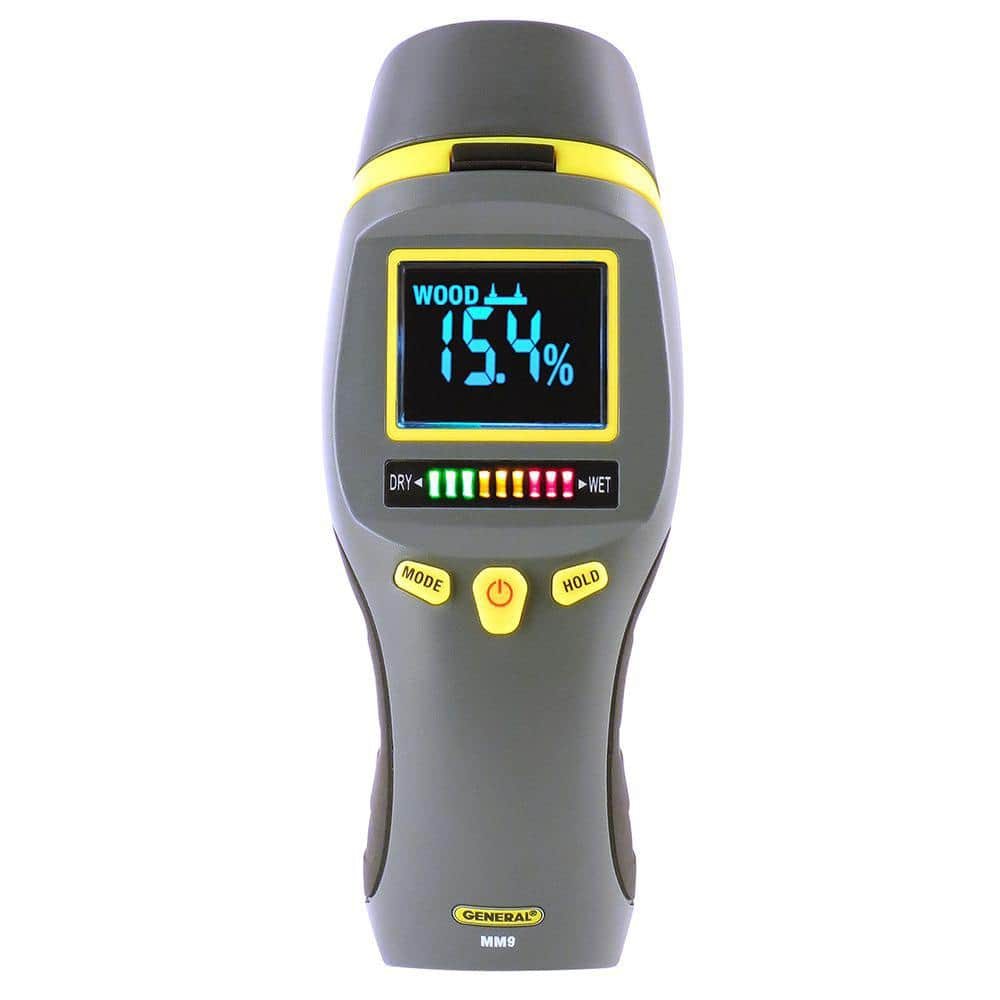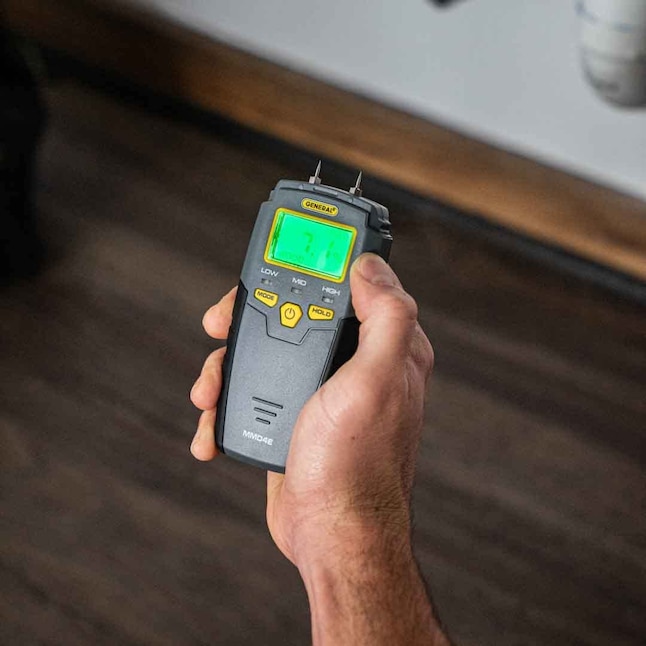Explore the Globe of Dampness Meters: Every Little Thing You Required to Know
In the world of wetness meters lies a world of precision and practicality that frequently goes unnoticed. These devices, while seemingly straightforward, hold a riches of info that can substantially influence numerous sectors and applications. Recognizing exactly how moisture meters operate, the different types readily available, and their varied uses can shed light on their significance in guaranteeing top quality and performance. By discovering the details of wetness meters, one can discover a valuable tool that transcends mere dimension, using understandings that can make a considerable difference in various fields.
How Dampness Meters Work
Moisture meters operate by gauging the electrical conductivity or capacitance of products to establish the wetness content existing - Moisture Meter. These meters are important devices across numerous industries, consisting of agriculture, woodworking, and building and construction. By using different approaches such as pin-type or pinless modern technology, dampness meters offer accurate readings that assist experts make educated choices
Pin-type moisture meters work by inserting the sharp pins into the material being checked. On the various other hand, pinless wetness meters make use of electro-magnetic signals to check a bigger location without causing any type of damage to the material's surface area.
Despite the approach made use of, dampness meters play an essential function in stopping problems such as mold and mildew development, architectural damages, or product problems created by excess moisture. Comprehending how these meters work is necessary for making sure the high quality and integrity of materials in various applications.
Kinds Of Dampness Meters
Offered the important function moisture meters play in numerous markets, it is vital to understand the various types available to specialists for precisely evaluating moisture degrees. There are mainly 2 primary sorts of wetness meters: pin-type and pinless dampness meters.
Pin-type wetness meters utilize 2 pins that are inserted right into the material being examined to determine the electrical resistance in between them. This technique is commonly made use of for wood, drywall, and various other building products. Pin-type meters supply accurate analyses at specific midsts, making them perfect for recognizing moisture slopes.
On the other hand, pinless moisture meters utilize electro-magnetic sensing unit plates to check a larger area of the product without creating any damage. This kind is appropriate for promptly scanning large areas and is generally used for floor covering, wall surfaces, and ceilings. Pinless meters are convenient for taking analyses on completed surfaces without leaving any type of noticeable marks.
Both kinds of dampness meters have their advantages and are picked based on the details needs of the job at hand. Understanding the distinctions in between these types is critical for professionals to make precise wetness evaluations.
Applications Throughout Industries
Building experts rely on dampness meters to analyze the wetness levels in structure materials like timber, concrete, and drywall, which is important for keeping architectural stability and preventing problems like rot or mold. The flooring sector makes use of moisture meters to determine the dampness web content in subfloors before setting up you can try these out various floor treatments, protecting against costly damages due to excess dampness. In the food industry, moisture meters are utilized to keep an eye on and regulate moisture levels in products such as grains, nuts, and dried out fruits to keep freshness and quality.
Tips for Making Use Of Wetness Meters
Utilize the moisture meter's calibration setups to make certain precise readings when measuring the dampness web content in different materials. Additionally, make certain the meter is established to the right moisture array for the product you are determining to obtain the most specific outcomes.

When utilizing a pin-type wetness meter, insert the pins to description the appropriate depth advised for the product being checked. This makes sure that the wetness readings are extracted from the proper deepness within the material, offering a more exact depiction of its wetness content. For pinless dampness meters, bear in mind to preserve appropriate contact with the product's surface area to get trustworthy readings.

Regularly examine and change the batteries in your moisture meter to protect against unreliable readings because of low power. Shop the meter in a risk-free and completely dry location when not in use to extend its lifespan and keep its accuracy. By following these pointers, you can optimize the performance of your dampness meter and acquire specific moisture web content measurements throughout various materials.

Upkeep and Calibration
To make sure the precision of dampness content dimensions, regular maintenance and calibration of the dampness meter are important actions in its correct functioning. Calibration readjusts the moisture meter to make certain that it gives regular and trusted results.
Calibration ought to be executed occasionally, specifically if the moisture meter is used frequently or in crucial applications where accurate measurements are needed. Lots of wetness meters include calibration tools or can be calibrated by expert services - Moisture Meter. It is recommended to keep a log of calibration dates and results to track the efficiency of the dampness meter with time. By adjusting the wetness and preserving meter consistently, customers can rely on the accuracy of the wetness content measurements gotten.
Conclusion
To conclude, dampness meters play an important function in different industries by accurately determining the wetness content of products. Recognizing just how these tools work, the different types available, and correct maintenance and calibration are essential for getting trustworthy results. Whether in construction, agriculture, or production, making use of dampness meters aids guarantee quality control and efficiency in procedures.
Building professionals count on wetness meters to evaluate the dampness degrees in building products like concrete, drywall, and timber, which is vital Recommended Site for maintaining architectural stability and avoiding problems like rot or mold. The flooring industry makes use of moisture meters to determine the moisture material in subfloors before mounting different flooring coverings, stopping pricey damages due to excess wetness.Utilize the wetness meter's calibration setups to ensure precise analyses when gauging the wetness web content in numerous materials. By following these ideas, you can optimize the efficiency of your moisture meter and acquire precise moisture material measurements throughout different products.
In conclusion, wetness meters play a critical function in different markets by properly measuring the wetness web content of materials.